The Balkan Peninsula is known as a traditional region, where people still respect their past and culture. The Balkan traditions usually revolve around religion, which has been the pillar of many Balkan communities.
This feature can be easily noted if you just take a look at the great number of monasteries that most Balkan countries are home too. Here are the top four most impressive monasteries in the Balkans:
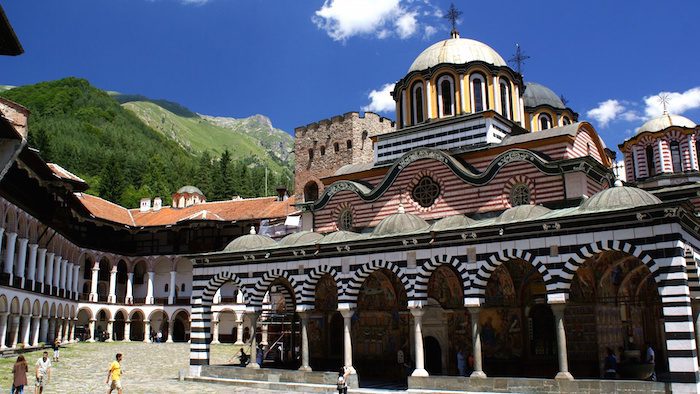
Rila Monastery is situated in the northwestern part of Rila Mountain, at an altitude of 1,150 meters. The closest village to this monastery is the Pastra, which is situated about 13 km away. The monastery is located also at a distance of 111 km from Sofia, the capital of Bulgaria.
Check out the Video: Rila Bulgaria’s Most Famous Monastery

It is one of the most famous Bulgarian symbols, and also the biggest monastery in the country and the second biggest monastery on the Balkan Peninsula with byzantine style architecture. The monastery was founded in the 10th century by a hermit monk called John, who later became the patron of Bulgaria. During the Byzantine period, the monastery was turned into a stronghold. Between 1334 and 1335, the local feudal Hrelyu Dragovola built a five-storey stone fortress tower right in the middle of the monastery’s courtyard.
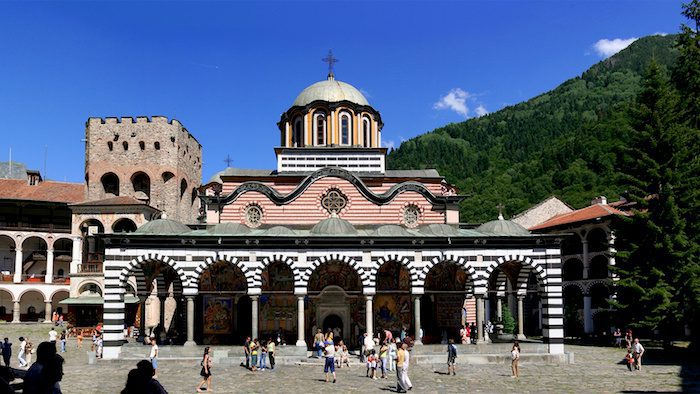
By the end of the 14th century, the monastery became a powerful feudal having many villages, lands and properties. When the ottoman empire occupied Bulgaria, the monastery was set to fire an burnt to the monastery grounds. However, three brothers, Joasaphus, David and Teophanous, assisted by the Russian monastery on Mount Athos, brought the monastery back to life.

The present Rila Monastery or national history museum dates from the beginning of the 19th century, when it suffered an ample process of renovation, and houses a complex of religious and residential buildings that cover an area of 8,800 square meters. In 1961, the monastery became a national museum and the region around it was declared a Nature Park.

This monastery was founded by King Stefan the First, son of Stefan Nemanja. Its construction lasted from 1206 to 1221, and today the monastery is one of the most important landmarks in Serbia. The first archbishop of the independent Serbian Church, Saint Sava, chose this monastery as the center of the Church, which gained independence in 1219. An important role in the completion of the monastery and its paintings had Saint Sava himself, who was the brother of Stefan I, and also the person who crowned him as a Serbian king. Today, the monastery is dedicated to the Ascension of Christ.
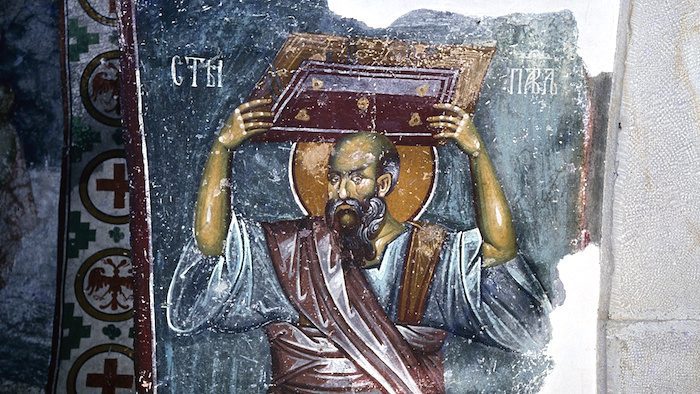
In the late 13th century, the monastery was damaged, but during the next century, King Milutin decided to renovate it. However, once the Turks arrived on these lands, the monastery was once again destroyed, only to be reconstructed again and again. The Žiča Monastery which can be admired today dates from between 1925 and 1935 and the late 1980s, when ample renovation works took place.
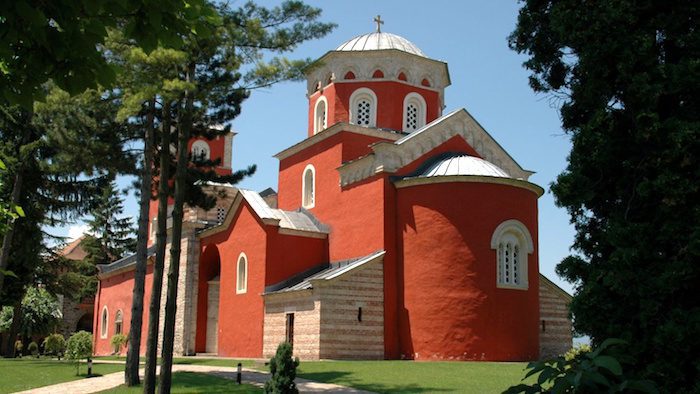
The current monastery was built following the model of older Raska churches, with its main section of the temple divided in three traves. Its facades are painted red, and imitate the architectural styles of the Holy Mountain. The interior frescoes are pretty damaged, but you can still admire plenty of paintings, such as the one that illustrates King Stefan and his oldest son Radoslav. The monastery is home to two tombs, one of arch-episcope Jevstatije, and the other of Patriarch Gerasim.

It is said that this monastery is a miracle built by nature and human interaction, being carved almost entirely in a mountain cliff. Today, the Ostrog Monastery is one of the most representative attractions of Montenegro, a place where hundred thousand pilgrims around the world and travelers of all religion gather to admire its majestic presence. The monastery was founded in the 17th century by Metropolitan St. Basil (Vladika Sv Vasilije) and is located only 45 minutes from Podgorica.

The monastery complex consists of the Lower Monastery and Upper Monastery. The Lower Monastery is home to the Holy Trinity Church that dates from 1824, and impresses tourists with colorful wall paintings. This monastery can be done by walking tour. The Upper Monastery will lead the way to the Church of St. Stanko THE Martyr, which was built in 2004 and contains the remains of St. Stanko and 27 WWII Yugoslav soldiers.

Being constructed in two caves, this part of the monastery is the most fascinating one due to the breathtaking scenery that unveils around it. One of the cave-chapels, Church of the Holy Cross, impresses through the paintings that illustrate scenes from the New Testament, while the other cave-chapel, that dates from 1774, it is home to the bones of St. Basil.

The world famous monasteries of Meteora, situated in northern Greece, create a breathtaking and mystical Christian pilgrimage site that combines the grandeur and strength of nature with the vision and talent of human minds. Carved inside the Meteora vertical cliffs, these monasteries offer absolute isolation, and an impressive setting to discover peace and harmony.
Check out the Top 10 Things to See and Do in Meteora, Greece

The rocks of Meteora are perched above the town of Kalambaka, at a maximum height of 400 meters. A UNESCO World Heritage Site, these historical monasteries started their journey as 24, but unfortunately only 6 monasteries have made it to our times. Most of the on-site cultural heritage monasteries date from the 14th to the 16th century, and were built by hermits who lived in the area, probably in individual caves.
List of the Meteora Monasteries:
Varlaam Monastery – the second biggest monastery; it is situated across the Great Meteoron Monastery and dates from the mid 14th century, when it was founded by Hosios Varlaam;
St. Stephen’s Monastery – the easiest monastery to get to, visitors having access to a small bridge instead of steps;
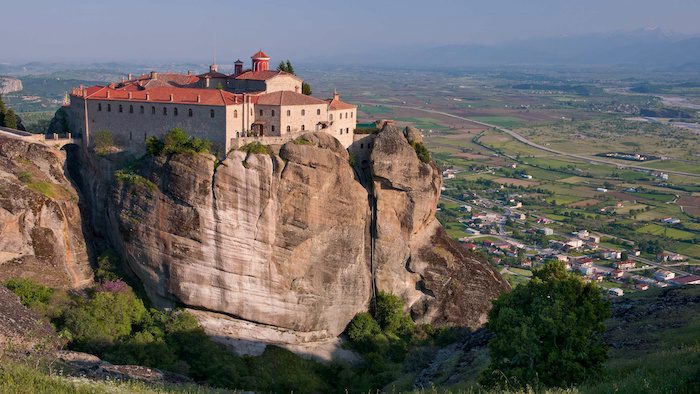
St. Nikolaos Anapafsas Monastery – it was founded at the end of the 14th century and is situated just 1 km away from Kastraki village;
Roussanou Monastery – it received its name from the first hermit who ever lived on the rock; the monastery is home to a cathedral where its celebrate the memory of Santa Barbara; it was founded at the end of the 16th century, but its decorations arrived only thirty years later;
Holy Trinity Monastery – the most difficult monastery to reach, but the panoramic views that you will capture from above are worth the effort;
Great Meteoro Monastery – the Holy Monastery of Great Meteoro (Transfiguration of Jesus) is the oldest and biggest monastery of this complex; it dates from the 14t century.
Did you enjoy the most impressive monasteries in the Balkans! Leave us a comment below!
Counter
101 Countries • 1432 Cities